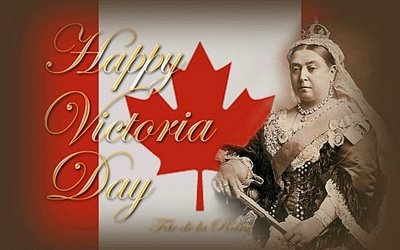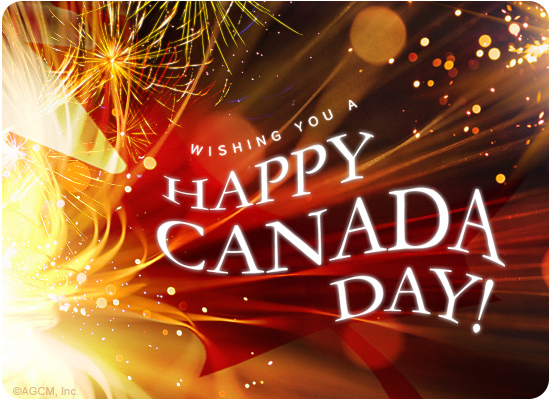Why is May 24th known as Victoria Day?
“The 24th of May is the Queen’s birthday If we don’t get a holiday, we’ll all run away!”
Canadians observe Victoria Day on May 24th or on the preceding Monday. For most of us, the arrival of this day means we can start planting our vegetable and flower gardens and put the long winter behind us. For the majority of Canadians, it also means a welcome long weekend. But how did Victoria Day come about, and why do we celebrate it?
Origins
This holiday is named after the British monarch who gave royal assent to Confederation. Queen Victoria, who reigned over Great Britain, was born on May 24, 1819. She enjoyed the longest reign in British history, ascending the throne in 1837 and ruling until 1901—a period of over 62 years!
The Parliament of Canada first declared her birthday a holiday in 1845, well before Confederation! The May 24th celebration was a popular one—if you had been a resident of Canada West (Ontario) in 1854, you might have joined a crowd of thousands that gathered in front of Government House in Toronto to shout a cheer to the Queen.
In 1901, the year of Victoria’s death, the holiday officially became known as Victoria Day. Since that time, Victoria Day has commemorated two royal birthdays: the birthday of Queen Victoria and that of the current monarch.
May 24th is a statutory holiday in all Canadian territories and in seven out of ten provinces. (In Quebec, this date is celebrated as La Journée nationale des Patriotes, or National Patriots’ Day, in memory of Anglophone and Francophone activists who fought for democratic government in 19th-century Quebec.)
Traditions
What traditions are upheld on Victoria Day? Well, if you’re enjoying a downtown stroll at noon in the nation’s capital or in any provincial capital, you’ll hear the firing of a 21-gun salute. You’ll also see the Royal Union flag (the “Union Jack”) flying alongside the National Flag of Canada, the “Maple Leaf,” from sunrise to sunset at federal buildings and properties.
If you’re in downtown Victoria, British Columbia—a city named for the Queen—you may join over 120,000 spectators watching marching bands, floats and clowns performing during the annual Victoria Day Parade.
Finally, you might be one of many Canadians ooohing and aaahing over dazzling firework displays that light up the evening sky of most Canadian cities. You might even choose to set off your own firecrackers and sparklers.
Synonyms
The Victoria Day celebration is also known by many other names. Some refer to it as the May Two-Four Weekend, the May long weekend (or just the May Long), the Victoria Day weekend and even Firecracker Day.
But no matter what you call it, have fun celebrating this patriotic Canadian holiday!
In addition to independence from the United Kingdom, Canada Day also marks a number of revolutionary breakthroughs and significant events. The first national radio hookup was initiated by the Canadian National Railway on July 1, 1927. The Canadian Broadcasting Corporation (CBC) held their first cross-country broadcast on Canada Day in 1958. The first color television transmission in Canada was held on July 1st of 1966. In 1967, the Order of Canada was inaugurated. “O Canada” was also named the official national anthem on Canada Day, 1980.
Canada Day 2011 is recognized with parades, fireworks, carnivals, outdoor concerts, and festivals. Many Canadians also engage in popular outdoor activities like sports, barbecues, and trips to the beach. The biggest celebration is held in Canada’s capital, Ottawa, Ontario. Events are held in museums and parks across the city. Onlookers can find historical presentations, live music, children’s activities, and sports games throughout the day of July 1st. The festival ends with a grand finale of fireworks over Parliament Hill. The Queen of England is often in attendance. Canada Day is celebrated in conjunction with the United States’ Independence Day during the International Freedom Festival. Fireworks are shot off over the Detroit River, and residents of Detroit, Michigan and Windsor, Ontario come together in joint-celebration.
The Creation of Canada Day
July 1, 1867: The British North America Act (today known as the Constitution Act, 1867) created Canada.
June 20, 1868: Governor General Lord Monck signs a proclamation that requests all Her Majesty’s subjects across Canada to celebrate July 1.
1879: A federal law makes July 1 a statutory holiday as the “anniversary of Confederation,” which is later called “Dominion Day.”
October 27, 1982: July 1, “Dominion Day” officially becomes Canada Day.
The Celebrations Start
July 1, 1917: The 50th anniversary of Confederation. The Parliament buildings, under construction, are dedicated to the Fathers of Confederation and to the courage of Canadians who fought in Europe during the First World War.
July 1, 1927: The 60th anniversary of Confederation. The Peace Tower Carillon is inaugurated. The Governor General at the time, Viscount Willingdon, lays the cornerstone of the Confederation Building on Wellington Street.
From 1958 to 1968: The government organizes celebrations for Canada’s national holiday every year. The Secretary of State of Canada is responsible for coordinating these activities. A typical format includes a flag ceremony in the afternoon on the lawns of Parliament Hill and a sunset ceremony in the evenings, followed by a concert of military music and fireworks.
July 1, 1967: The 100th anniversary of Confederation. Parliament Hill is the backdrop for a high‑profile ceremony, which includes the participation of Her Majesty Queen Elizabeth II.
From 1968 to 1979 (with the exception of 1976): A large multicultural celebration is presented on Parliament Hill. This concert is broadcast on television across the country. The main celebrations (called “Festival Canada”) are held in the National Capital Region throughout the month of July. These celebrations include many cultural, artistic and sport activities and involve the participation of various municipalities and volunteer associations.
From 1980 to 1983: A new format is developed. In addition to the festivities on Parliament Hill, the national committee (the group tasked by the federal government to plan the festivities for Canada’s national holiday) starts to encourage and financially support the establishment of local celebrations across Canada. Start-up funding is provided to support popular activities and performances organized by volunteer groups in hundreds of communities. Interested organizations can make a request to the Celebrate Canada program.
1981: Fireworks light up the sky in 15 major Canadian cities, a tradition that continues today.
1984: The National Capital Commission (NCC) is given the mandate to organize Canada Day festivities in the capital.
2010: Festivities on Parliament Hill receive a royal treatment when Her Majesty Queen Elizabeth II and His Royal Highness the Duke of Edinburgh join the festivities to celebrate Canada’s 143rd anniversary.
2011: Their Royal Highnesses Prince William and Catherine, the Duke and Duchess of Cambridge, participate in Canada Day festivities on Parliament Hill on the occasion of Canada’s 144th anniversary.
2014: Canadian Heritage organizes the 147th Canada Day celebrations. As we approach Canada’s 150th anniversary in 2017, the government has given the Department the mandate to organize Canada Day festivities in the capital.


